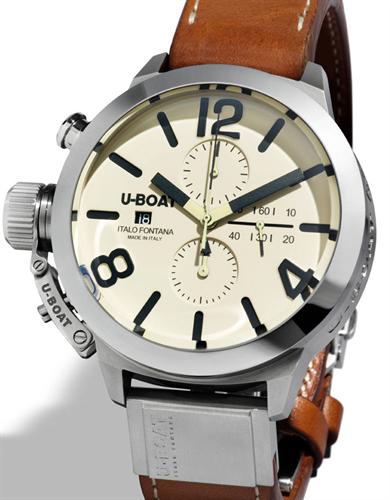

The boat had a complement of between forty-four and sixty.

U-316 was fitted with five 53.3 cm (21 in) torpedo tubes (four fitted at the bow and one at the stern), fourteen torpedoes, one 8.8 cm (3.46 in) SK C/35 naval gun, 220 rounds, and two twin 2 cm (0.79 in) C/30 anti-aircraft guns. When submerged, the boat could operate for 80 nautical miles (150 km 92 mi) at 4 knots (7.4 km/h 4.6 mph) when surfaced, she could travel 8,500 nautical miles (15,700 km 9,800 mi) at 10 knots (19 km/h 12 mph). The submarine had a maximum surface speed of 17.7 knots (32.8 km/h 20.4 mph) and a maximum submerged speed of 7.6 knots (14.1 km/h 8.7 mph). The boat was capable of operating at depths of up to 230 metres (750 ft). She had two shafts and two 1.23 m (4 ft) propellers. RP 137/c double-acting electric motors producing a total of 750 metric horsepower (550 kW 740 shp) for use while submerged. The submarine was powered by two Germaniawerft F46 four-stroke, six-cylinder supercharged diesel engines producing a total of 2,800 to 3,200 metric horsepower (2,060 to 2,350 kW 2,760 to 3,160 shp) for use while surfaced, two Garbe, Lahmeyer & Co. U-316 had a displacement of 769 tonnes (757 long tons) when at the surface and 871 tonnes (857 long tons) while submerged. German Type VIIC submarines were preceded by the shorter Type VIIB submarines. The U-boat spent her career as a training vessel. The submarine was laid down on 11 August 1942 at the Flender Werke yard at Lübeck as yard number 316, launched on 19 June 1943 and commissioned on 5 August under the command of Oberleutnant zur See Hermann Stuckmann. German submarine U-316 was a Type VIIC U-boat of Nazi Germany's Kriegsmarine during World War II. 5 × 53.3 cm (21 in) torpedo tubes (four bow, one stern).


 0 kommentar(er)
0 kommentar(er)
